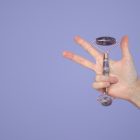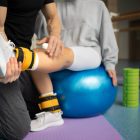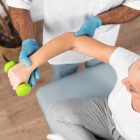As an old age person, the essential part of life is mobility, the ability to move on your own and not dependent on anyone for daily needs.
Ageing reduces the efficiency of the body’s system, but each individual tries to maintain these systems to their optimum function throughout life. The physiotherapist has a key role in enhancing the mobility and independence of older people by enabling them to use their body effectively.
Goals should be directed more towards the management and improvement of a condition rather than passive ‘care’ towards the older person. For older people setting a specific goal should be the foremost on their mind, i.e., they need improvement in their former disability, they want to be pain-free, they just want to be comfortable with a bit of nagging pain, or they want to maintain their functional mobility. The physiotherapist can help achieve all these goals but not all together. As a physiotherapist myself, have seen a lot of older people living life independently after the treatment, that little pain still lingers, but with continuous exercises, it becomes better in the long run.
Posture plays a very crucial role in older people, as the body is degenerating the first thing to notice is the posture; usually, people try to bend forward because of the core muscle weakness, i.e., our posture goes for a toss, and musculoskeletal problems start building up. Its understandable that older group of people has to face difficulty related to musculoskeletal, neurological, and cardiovascular problems, interlinking between psychological, rehabilitative, economic and social problems that all need attention is the norm that adds the unique pattern of ageing in each individual, which leads to varying responses and complexity of the challenges. That’s why physiotherapist needs to ensure a holistic and patient-centred approach.
In Orthocure clinics, for older patients, we focus especially on the maintenance of their posture and enhancing their mobility and independence. Our strength training program focuses on the activation of the core muscles, which will slow down the wear and tear process of the body happening due to ageing. It helps to maintain the posture, thus reducing the episode of any further disability. Along with the strength training, we also focus on improving the balance and endurance of the older patients to improve their gait pattern and decreasing the episodes of fall. Our task is to highlight the risks and try to minimise them rather than stopping the functioning altogether.
Proper guidance is also very important to increase their aerobic capacity through walks, and basic exercises to improve and maintain the flexibility that in turn improve mental/cognitive function, reduces stress/anxiety and improve self-confidence.
The exact exercise chosen will vary from person to person considering their medical conditions and fitness level; it is very important to find something that each person enjoys and can continue with independently. Physical exercise provides a myriad of benefits and can reduce the risk of chronic disease and increase life expectancy.





